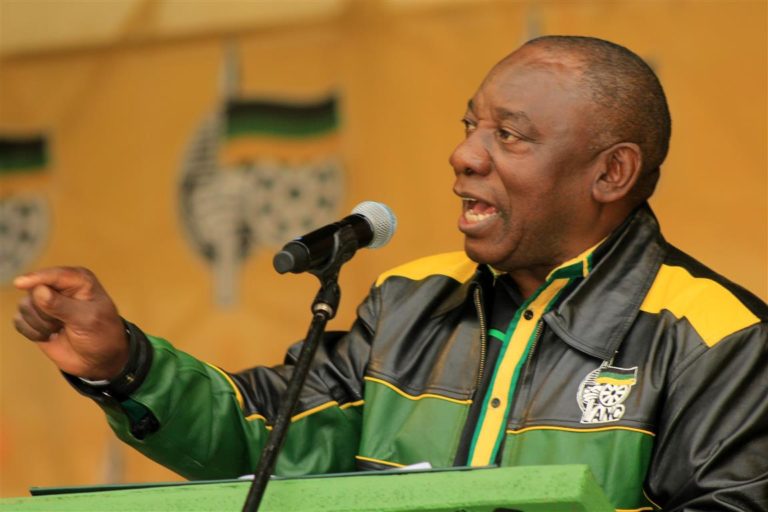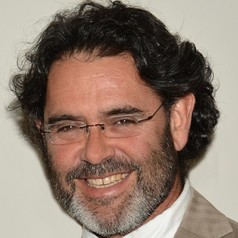The state of the nation speech delivered by South Africa’s new president Cyril Ramaphosa was designed to project an image of hope and change. The new head of state emphasised the fight against corruption, improved governance of state owned enterprises, expropriation of land without compensation and the rebuilding of the manufacturing sector.
But Ramaphosa and his incoming team are probably well aware that they face the challenge of rebuilding the institutions that were destroyed during the Jacob Zuma area. This is confirmed by references to the appointment of a new board for the power utility Eskom and a commission of inquiry into the South African Revenue Services.
The challenge that will face Ramaphosa’s administration is how to rebuild the institutions as the centrepiece of a new economic policy. The problem is that institution building and economic policy making in South Africa have, until now, been kept separate. Institution building is about rule making and governance. Economic policy is about maintaining macroeconomic stability. The groups of experts who cluster around these two focus areas find it hard to understand each other. This will have to change if Ramaphosa’s promises are to be realised.
Going forward it will be necessary to address institutional reform as an economic strategy.
The state of the nation address did not achieve this synthesis. The dualism persists in the way in which Ramaphosa kept institutional reform and economic policy separate. For example, he promised a range of interventions, including job creation, land reform, improved education and health insurance. But if past policies are followed and fiscal expenditure remains pegged at around 60% of GDP, will there be sufficient cash for all the action items? And can this ceiling be breached without institutional reforms that drastically reduce corruption and so improve developmental and economic impacts?
Institutional meltdown under Zuma
During Thabo Mbeki’s era the focus was on macroeconomic stabilisation. In contrast the Zuma administration focused on a specific set of institutions – state owned enterprises. Their procurement budgets were identified as the key levers for building a black industrial class not dependent on white capital. This is what became the core ideological focus of “radical economic transformation”.
South Africans now know that this also created the conditions for rent seeking and state capture. And while this institutional turn was under way for nefarious reasons, the country’s National Treasury became the champion of macroeconomic stability. This was why the Gupta family felt it important enough to offer the then deputy minister Mncebisi Jonas R600 million to take the top job in a bid to engineer its capture.
The institutional focus during the Zuma years had nothing to do with institution building. Indeed, quite the opposite. Zuma presided over no less than 12 cabinet reshuffles. With every one came changes in the top echelons of government departments and agencies.
The average length of service of top officials in a particular position during this period was six to nine months. This, coupled with boards of state owned enterprises being stuffed with incompetent loyalists, drove the institutional melt down that the Ramaphosa administration now faces. The biggest casualty was institutional memory.
If Zuma wants to know what he did wrong, it was to allow this wanton destruction of state capacity to occur without restraint.
The capture of state owned and key state agencies so that they could be repurposed has left them moribund. Examples abound. They include Eskom, Transnet, South African Airways, the South African Revenue Services, the Department of Water and Sanitation. Many local governments fell prey, too.
What economic policy needs to be
What South Africa needs now is a dedicated focus on investment-led inclusive and sustainable economic growth aimed at building a well-being economy.
But economic growth that benefits all South Africans won’t be achieved if investors are focused on short-term capital gains. The financialisation of the economy – the exponential growth of the financial sector – contradicts what long-term development requires. The country’s development finance institutions survived the Zuma years relatively unscathed. This is particularly true for the Development Bank of Southern Africa and the Industrial Development Corporation. They need to be refinanced and repositioned at the centre of economic reconstruction.
Rebuilding the manufacturing sector will require complex institutional reconfigurations. This will involve linking public investment in innovation to private long-term investments in new value chains, to skills development and market reforms, and to targeted tariff increases to protect nascent industries.
Who will do this kind of work? Merging the departments of trade and industry, economic development and small business would be a good start. But it is questionable whether government officials are the best people to do this kind of sensitive institutional work. Organisations like development finance institutions or university-coordinated partnerships would be better.
The way forward
South Africa has celebrated the defence of its constitutional democracy. But the harsh reality is that the country faces development challenges that have rarely been successfully addressed within a democratic framework elsewhere in the world. Most countries that have succeeded in supplanting a powerful and wealthy elite with a more equitable and democratic order have gone through a repressive period that resulted in severe curtailments of democratic freedoms.
The only way South Africa can pull this off is if it fundamentally rethinks the interface between economic policy making and institution building. Radical new institutional innovations that mobilise new investment flows involving creative partnerships between public, private and nonprofit sector organisations will be required.
There are hundreds of examples of this approach when it comes to the revitalisation of blighted inner city districts. Other examples include small cities that meet all their energy needs from renewables by collaborating across sectors to generate innovations.
Yes, a national social compact will help frame this, but the country doesn’t need another elite pact. It needs a collective effort to mobilise creativity on a massive scale across all sectors – and all walks of life.
 Mark Swilling receives funding from the National Research Foundation.
Mark Swilling receives funding from the National Research Foundation.



 Oil Prices Rise as Geopolitical Tensions and Supply Risks Intensify
Oil Prices Rise as Geopolitical Tensions and Supply Risks Intensify  Morgan Stanley Boosts Nvidia and Broadcom Targets as AI Demand Surges
Morgan Stanley Boosts Nvidia and Broadcom Targets as AI Demand Surges  Tech Stocks Lift S&P 500 as Fed Rate-Cut Expectations Rise
Tech Stocks Lift S&P 500 as Fed Rate-Cut Expectations Rise  South Korea Inflation Edges Up in November as Food and Service Costs Climb
South Korea Inflation Edges Up in November as Food and Service Costs Climb  Ethereum Ignites: Fusaka Upgrade Unleashes 9× Scalability as ETH Holds Strong Above $3,100 – Bull Run Reloaded
Ethereum Ignites: Fusaka Upgrade Unleashes 9× Scalability as ETH Holds Strong Above $3,100 – Bull Run Reloaded  Japan’s Finance Minister Signals Alignment With BOJ as Rate Hike Speculation Grows
Japan’s Finance Minister Signals Alignment With BOJ as Rate Hike Speculation Grows  Australia’s Economic Growth Slows in Q3 Despite Strong Investment Activity
Australia’s Economic Growth Slows in Q3 Despite Strong Investment Activity  IMF Deputy Dan Katz Visits China as Key Economic Review Nears
IMF Deputy Dan Katz Visits China as Key Economic Review Nears  South Korea Posts Stronger-Than-Expected 1.3% Economic Growth in Q3
South Korea Posts Stronger-Than-Expected 1.3% Economic Growth in Q3  India’s IT Sector Faces Sharp 2025 Valuation Reset as Mid-Caps Outshine Large Players
India’s IT Sector Faces Sharp 2025 Valuation Reset as Mid-Caps Outshine Large Players  Asian Currencies Steady as Rupee Hits Record Low Amid Fed Rate Cut Bets
Asian Currencies Steady as Rupee Hits Record Low Amid Fed Rate Cut Bets  U.S. Stocks Slip as Investors Await Fed Rate Decision and Monitor Market Shifts
U.S. Stocks Slip as Investors Await Fed Rate Decision and Monitor Market Shifts  U.S. Soybean Shipments to China Gain Momentum as Trade Tensions Ease
U.S. Soybean Shipments to China Gain Momentum as Trade Tensions Ease  Bitcoin Smashes $93K as Institutions Pile In – $100K Next?
Bitcoin Smashes $93K as Institutions Pile In – $100K Next? 





























